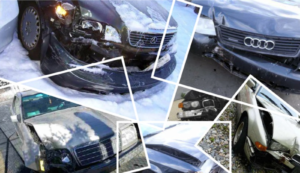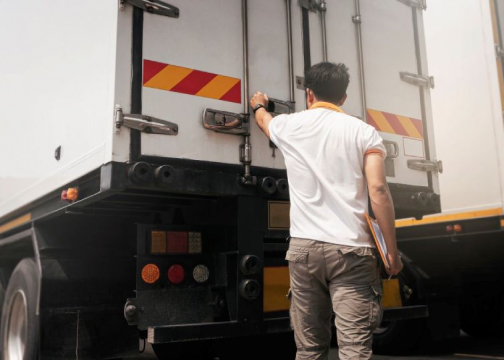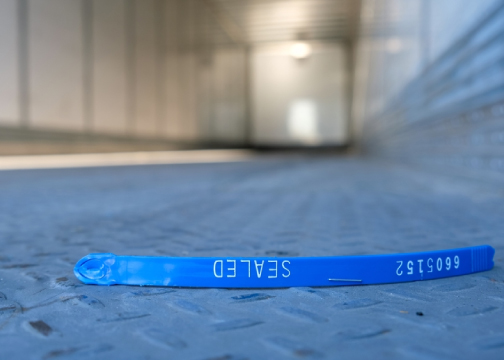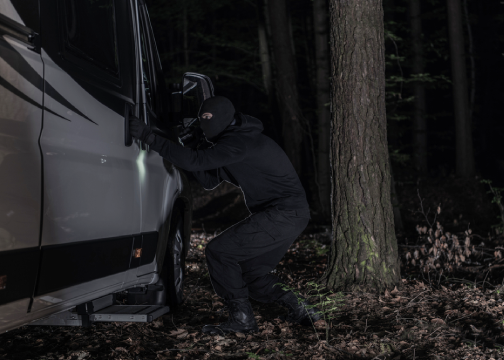What are staged accidents and how can your fleet stay protected?
Staged accidents are auto wrecks intentionally caused by drivers for the purpose of filing an insurance claim. These staged accidents can be committed by individuals, or can be committed by criminal rings operating elaborate schemes. And staged accidents are becoming more and more common.

Fact: Staged accidents are the #1 type of insurance fraud scheme.
Although there is no way to definitively quantify the scale of staged accidents, we can get a sense of the scale through some cases. In the UK, a mind-boggling 170,000 crashes were tied to a single ‘cash for crash’ gang over the course of just 15 months.
Fact: Staged accidents are on the rise
One insurance company, LV, estimated staged accidents rose over 30% in 2021.
Fact: Staged accidents target commercial vehicles
Fraudsters know your fleet is well-insured. The payout potential is huge for a staged accident involving your fleet. In Louisiana, a ring involving at least 33 people collected over $545,000 from one trucker’s insurance company.
What do staged accidents look like?
The most typical staged accidents involve the following setups:
- The brake-slam: This might be the most common type of staged accident. It’s simple: slam on the brakes with another vehicle close behind. Here’s a great compilation of the typical brake-slam setup.
- The wave-in: This can take place in a parking lot or on the road. One driver waves another unsuspecting driver in: either to change lanes, or to back out of a parking spot. The fraudster then slams into the innocent driver backing out or changing lanes. Will the fraudster admit they signaled a go-ahead? Of course not. The fraud has begun.
- The start-and-stop: The start-and-stop typically occurs in heavy traffic. The fraudster begins to rapidly accelerate and then suddenly slams on their brakes.
- The swoop and squat: This setup involves three vehicles. One fraudster serves as the ‘squat,’ and another as the ‘swoop.’ The squat vehicle pulls in front of the innocent vehicle, while the swoop vehicle pulls in front of the squat. The swoop vehicle slams on his brakes, causing the squat vehicle to slam on his. The innocent vehicle slams into the squat, as they are obviously not suspecting this sudden stop.
- The side swipe or (‘curb drive down’): One driver changes lanes when it’s clear to go. All of a sudden, a fraudster swoops in from the opposite lane at the same moment.
- The t-bone: As you pass through an intersection, a fraudster speeds up to hit you. They have phony witnesses on hand to claim you ran a stop sign or a red light.
In practice, safety technology looks like:
1. Dual-facing dashcams:
The best weapon your fleet can have against staged accidents is a dual-facing dash cam. This means a dash cam that records everything on the road and in the vehicle.
2. Safety data:
Safety data can greatly strengthen your fleets standing in court, especially if the accident recording is ambiguous. Does your fleet track, record, and log driver safety incidents? Does your fleet have driver safety scorecards? Does your fleet have AI dashcams, which recognize distracted driving and deploy real-time coaching? All of these technologies will build an iron-clad standing in court.
3. Trip Metadata
How fast was your vehicle going? How rapidly did your vehicle accelerate? Was your vehicle in a heavy traffic area? If you can provide these specific variables – you have a strong chance of proving that your vehicle was objectively not at fault.
Staged accidents cost fleets billions every year. Just one staged accident can put your entire fleet out of business. Protecting your fleet against staged accidents means having the technology that swats it away – dual-facing AI dash cams, safety data, and trip metadata. FleetUp offers what you need to stay protected – and so much more – on the industry’s leading all-in-one platform.








